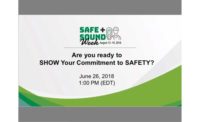That narrative changed in 2010, when operators of the Deepwater Horizon lost control of a wellhead that had been experiencing similar disturbances. This time there was no speculation of whether the risk was “real” or not. The resulting explosion and fire killed 11 workers and created an environmental and public relations nightmare. For leaders across industry, the tragedy of the Deepwater Horizon was compounded by the fact that many of the lessons it had to offer had already been ‘learned’ before.
So why did only one organization seem to heed them?
Safety improvement is inherently a learning process. Up to now, organizations have largely focused on learning to be safe. Studying the lessons of Bhopal, Piper Alpha, Texas City, and many others, has helped us create the fundamental systems and processes that reduce risk. Yet as organizations face an increasingly complex environment — from shifting demographics and competition for resources to rapidly expanding technology and societal expectations — how we learn must also change. It’s not enough to be safe. We must also learn how to stay safe.
Two ways of learning from events
At the core of any learning process is the use of mental models — constructs we use to make sense of the world — for example Reason’s Swiss Cheese model or the Hierarchy of Controls. In some instances, however, mental models can limit our ability to solve problems. If we believe injuries are usually caused by workers not following rules, we’re not likely to look for (or work on) contributing factors in processes, leadership, or culture.
Researchers have identified two basic types of systems that organizations use to learn from events:
• Single Loop Learning – The first system takes a narrow view of what happened, typically focusing on immediate causes. In this system, organizations ask things such as: Whose fault was it? Was it mechanical failure or operator error? How do we prevent this event from happening again? The focus is on identifying and addressing the immediate cause and achieving resolution. You often see the loop closed with employees advised to be more careful or recommendations for equipment or process fixes. Software used for Incident Investigation and root causes analysis has a de facto closed loop.
• Multiple Loop Learning – In these systems, the organization seeks to understand how something happened in a way that generalizes out to other applications. It steps back from the immediate situation to identify systemic causes and examine mental models to ask: Is there something new here that we need to know? Leaders in this system ask: Where else could this happen? Why is this occurring? How does what we learn from this apply to other things we’re doing? The new knowledge is then used to better address risk. In the case of ExxonMobil, events like the Valdez disaster in 1989 led the organization to reexamine mental models it held around safety, including when and how to evaluate risk and who gets a say in safety decisions. The decision to abandon the well project in the Gulf of Mexico was a result of this learning system. The decision was the outcome of multiple iterations of input and feedback over many years.
Becoming a great learning organization
Learning is an ongoing process that never stops; so too the systems and processes to support continuous learning. Learning organizations share several common practices:
• They make learning routine – Rather than waiting for an incident to trigger them going into learning mode, learning organizations create formal mechanisms (e.g., cross-functional teams, advanced training in incident investigation) to continually capture and respond to risk data.
• They put the focus on generating new knowledge, not finding fault – The outcome of the learning process is always on finding systemic issues and generating new knowledge. It’s anticipatory, looking for broader applications and better understanding.
• They collaborate beyond their own borders – Some of the great pioneers of safety learning aren’t individual organizations but industry groups. The airline industry, healthcare, nuclear industry, and others have achieved significant advances in safety through collaboration.
• They know and share their story – Great learning organizations are self-aware. Their newest employee knows the story of where they came from and where they’re going. They’re vigilant about preserving organizational memory and assuring that hard lessons are never forgotten — or repeated.
Learning to stay ahead
Expectations of what safety is and could be have exceeded far beyond the early charter of reducing costs and injuries. But the only way to get to better performance — and a more strategic role in the organization — is to similarly exceed the quality and depth of how we learn from events and other safety data.
For additional reading on the Blackbeard well and industry’s reaction to ExxonMobil’s decision, see “Exxon: Juggernaut or Dinosaur?” BusinessWeek, February 5, 2009 and "New Culture of Caution at Exxon After Valdez” by Jay Mouawad, New York Times, July 12, 2010.


